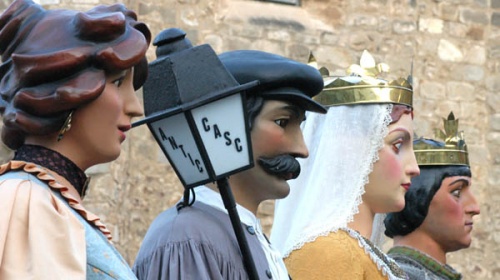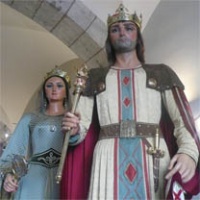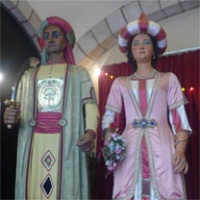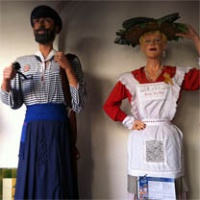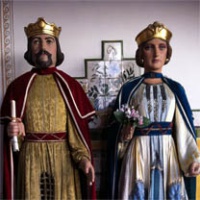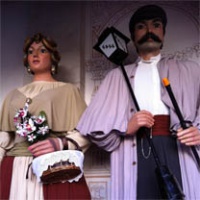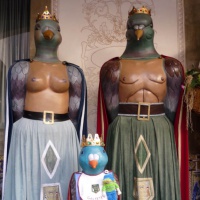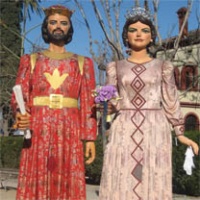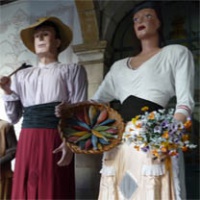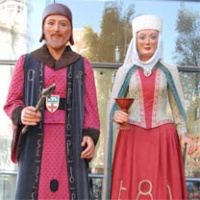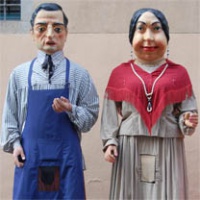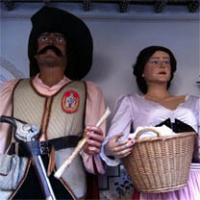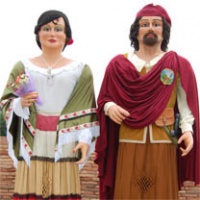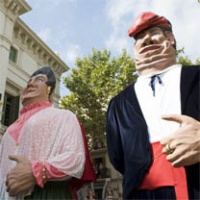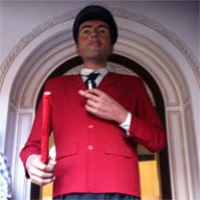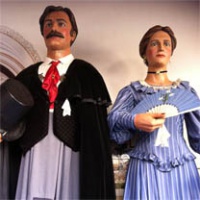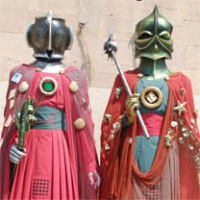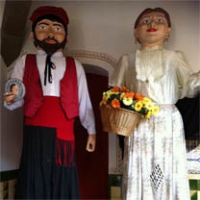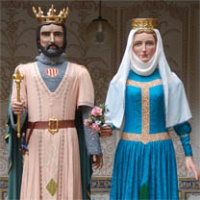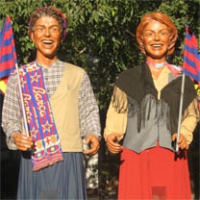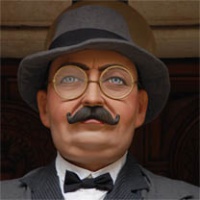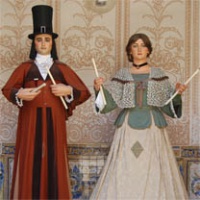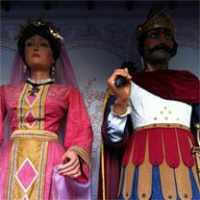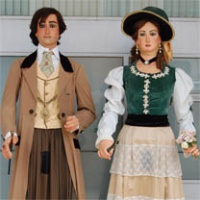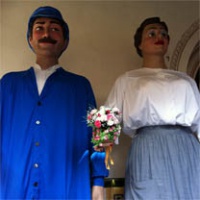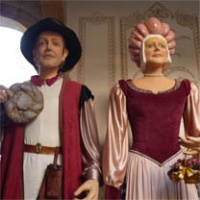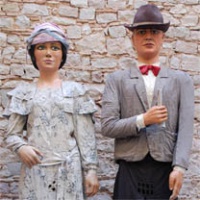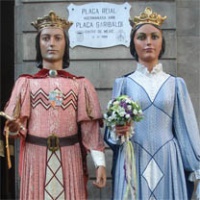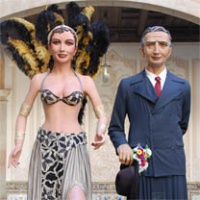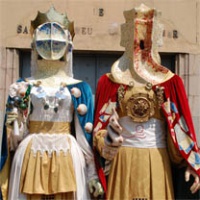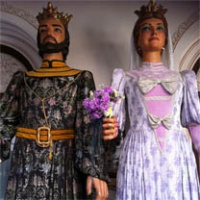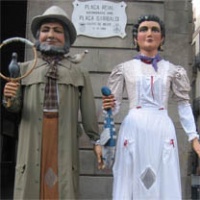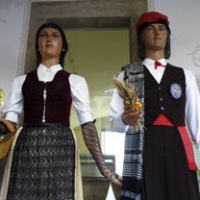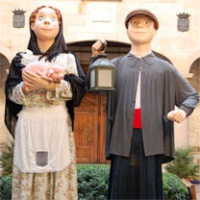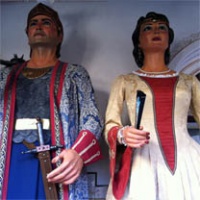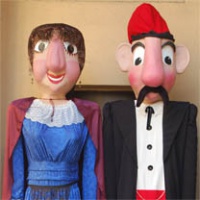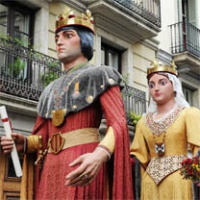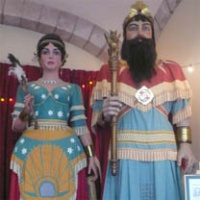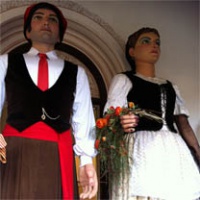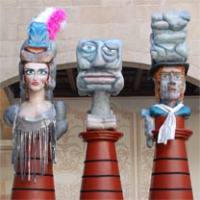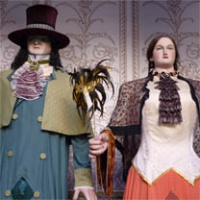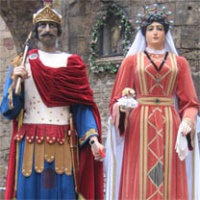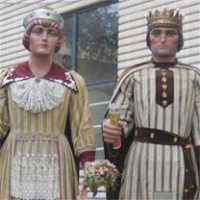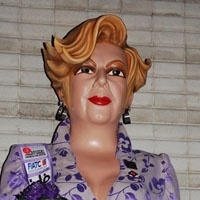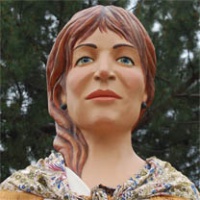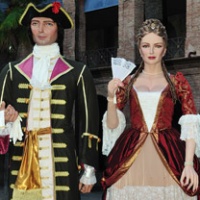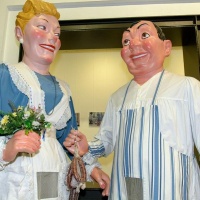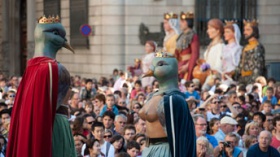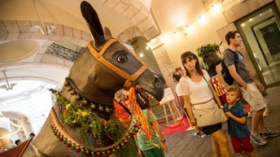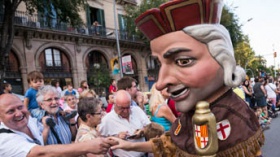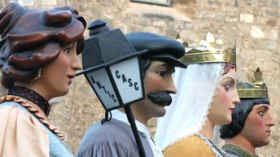Gegants
The festival giants, the gegants, originated around the first Corpus processions. It is documented that in Barcelona in 1424 the first gegant, Goliat, took part. Despite these beginnings being recorded within a religious context, little by little the figures gained a fun and totally festive meaning.
In the 19th century, the gegants of the villages and towns began to be an expression of local identity. But it was in 1902, the year Barcelona City Hall organised the «Concurs de gegants nanos i monstros tipichs» competition, that they were rediscovered as a force so much more than just a symbol expressing local identity.
In the 20th century, many of the giants that had survived the civil war were converted into representations of the Catholic kings. The repression of Corpus from the perspective of national Catholicism led to the creation of new gegants, in the guise of kings and queens, to take part in parish processions, and they were easily identifiable as Ferdinand and Isabella.
With the arrival of democracy, many towns rediscovered the gegants as a way to express local and festive identity. Forgotten figures were recovered and the street took back its festive dimension. This latest rediscovery of the giants marked the new era in the world of the geganter: an important phenomenon of associations started up, new constructors appeared, forgotten figures were recovered, and others were created in places where there had been no previous tradition of giants.
On top of this, the groups, or colles, consolidated as legally constituted associations which, in many cases, are now the driving forces of the associations and cultural life in the villages, towns and cities.
When all is said and done, the phenomenon of gegants in Barcelona has ended up being a human movement of huge dimensions. The Coordinadora de Geganters de Barcelona is a guarantee that this tradition will survive. There are many neighbourhood and district gatherings held throughout the year, but the La Mercè festival is particularly notable for its gegant events. These include the Xambanga procession of dancing giants, the Matí Gegant, the Seguici d’Autoritats (procession of authorities), the Cavalcada (cavalcade procession), and the Toc a Plegar (closing ceremony).




